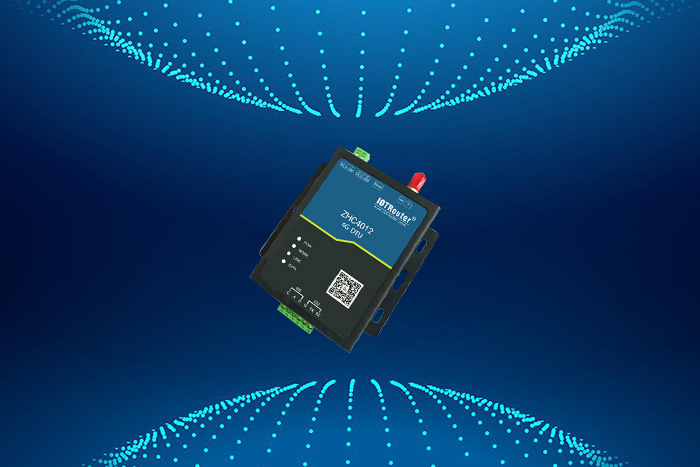Wireless data transmission DTU is a transmission device that uses the cellular networks of major operators to transparently transmit the data collected at the front end to the remote control center without loss. It can complete functions such as real-time data collection, remote data transmission, and wireless measurement and control. , providing a simple, reliable, low-cost long-distance wireless communication solution for the field of Internet of Things communication.
The working principle of wireless data transmission DTU
The communication between the DTU and the server is initiated by the DTU side, and the server side responds to the DTU side by sending feedback or accepting communication. The DTU side and the server side together form an application system based on wireless network communication. Compared with the DTU side, the server side is installed with more complex applications, which can accept any communication request initiated by the DTU side and detect the communication status in the link at all times, thereby realizing real-time data collection, database services and other applications.
The DTU side needs to know the IP address and port number of the server side in advance before it can initiate a communication request. Once communication is established, there is no difference between the server side and the DTU side.
L'adresse IP du serveur peut être soit une IP publique (IP fixe), soit un nom de domaine dynamique obtenu par un serveur de résolution de noms de domaine.
Le numéro de port du serveur correspond généralement à l'application spécifique exécutée dans le serveur, par exemple le numéro de port TCP 21 est utilisé par le service FTP et le numéro TCP 80 est utilisé par le serveur hypertexte (HTTP). En d'autres termes, l'application côté serveur prend en charge l'envoi et la réception de données par le biais d'un numéro de port spécifique.
Usually the IP address obtained by the DTU terminal is its intranet IP address randomly assigned by the network operator. It can access the Internet through the mobile operator’s gateway. Special attention should be paid to the NAT (Network Address Translation) provided by the wireless gateway during system application. ) The port mapping service has a very short validity period, so if you need to maintain two-way communication, you must set up heartbeat packets sent regularly by DTU to maintain NAT port mapping.
Functional characteristics of wireless data transmission DTU
- Connection method: Supports the three major domestic operators, and is fully compatible with 4G/3G/2.5G networks.
- Communication protocol: Supports multiple communication protocol connections, including TCP, HTTP, MQTT, etc., making it easy for users to choose freely.
- Featured functions: Supports sending registration package/heartbeat package data, supports remote device terminal setting module parameters, supports seamless and free switching between parameter configuration mode and transparent transmission mode, supports domain name resolution IP and domain name direct connection functions, supports automatic restart after the device is offline Establish connection function.


As a wireless data transmission terminal, Zongheng Intelligent Control DTU has the characteristics of small size and low heat generation. It can complete the task of data transmission in harsh environments, perform lossless transparent transmission of data, and has PPP layer heartbeat, ICMP detection, The TCP heartbeat link detection mechanism can achieve disconnection reconnection, data retransmission, and efficient temperature data transmission to ensure data reliability and no packet loss.